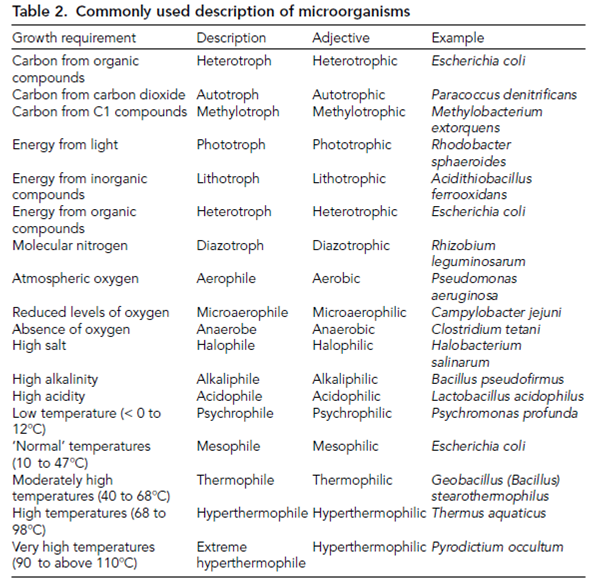Habitat diversity
Prokaryotes can grow at extremes of temperature, oxygen, and pH and radiation dosage. This has allowed them to colonize all category of the earth which may provide the cells with substrates for growth. The way in which microorganisms grow has given us a means of describing them according to their ability to use certain compounds for growth or their tolerance of physiochemical conditions. Therefore, an organism which can use several organic compounds to grow can be defined as a heterotroph and if it can tolerate atmospheric oxygen concentrations it will be called an aerophile. The range of descriptions is given in the Table 2.
Archaea and Bacteria have been established growing in snow through the upper temperature limit of bacterial life appears to be around 96∞C. Through, the Archaea hold the record for the highest growth temperature with Pyrolobus fumarii growing at above 113∞C. like high temperatures are not recognized on terrestrial earth but are restricted to deep-sea hydrothermal vents. Widely speaking the Archaea have more representative species growing at very high or very low temperature and pH and are generally held to be predominantly extremophiles.

The terms can be combined to define more than one physiological property example for The Archaea Acidianus breyerli can be described as a hyperthermophilic chemolithoautotroph. The word obligate can be used to denote those organisms that are restricted to one mode of growth example for Methanococcus capsulatus can only grow on methane so is described as an obligate methanotroph.